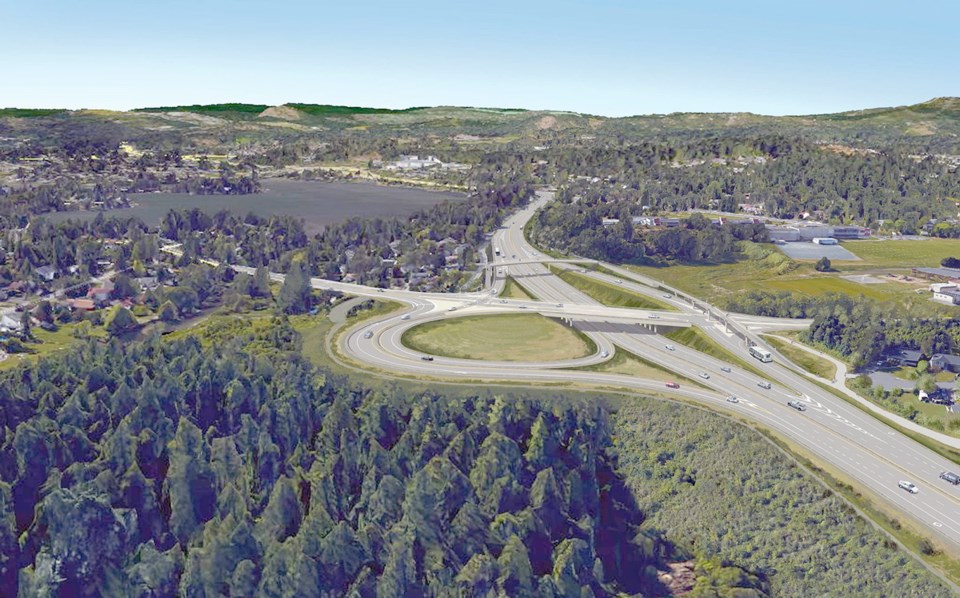Without question, the intersection at the Island Highway, McKenzie Avenue and Admirals Road is a huge source of frustration for drivers who find commute times doubled or tripled as they inch along. Nevertheless, the decision to build a partial cloverleaf at this intersection can be questioned on several fronts.
Good urban transportation planning starts with putting housing in the right places. Letting a city sprawl outward inevitably results in dramatically increased congestion. Conversely, compact development reduces both transportation need and resulting congestion. Fair enough; we should have a compact development pattern, but what about sprawl that has already occurred and created congestion at places such as McKenzie, Admirals and the highway?
Trying to accommodate single-occupancy vehicles is definitely not the answer. Every city, worldwide, that has tried to “build its way out of congestion” with more lanes, bigger highways, new interchanges and the like has failed miserably. Experience demonstrates that making it easier to move by car simply results in more cars and, ultimately, more congestion. The best solution is to have more people using other modes such as walking, cycling and transit.
Furthermore, systemic congestion problems can’t be fixed by concentrating on a single intersection. We have a regionally congested transportation system. Relieving the flow for one intersection just moves congestion somewhere else, creating increased problems for other areas.
For all these reasons, a new interchange, primarily aimed at serving cars, is an “inappropriate fix” that’s likely going to encourage in sequence: more sprawl, more cars and more congestion. We should learn from past errors, not slavishly repeat them.
In the end, however, the province has decided to build a new interchange and it has the power to do so. What’s really puzzling is the decision to select the partial cloverleaf design over the double diamond.
The partial cloverleaf intrudes into Cuthbert Holmes Park and moves aggressive traffic closer to sensitive habitat. The double diamond largely avoids these negatives. If you’re going to select the partial cloverleaf, it should offer compelling advantages to compensate for its negatives.
Unfortunately, it doesn’t seem to do so. The only apparent advantage of the partial cloverleaf is its ability to move vehicles travelling east somewhat faster off the highway onto McKenzie. But is that really an advantage?
Once on McKenzie, drivers travel a few hundred metres before hitting traffic lights at Burnside. A few hundred metres more are lights at Carey, followed in quick succession by lights at Glanford, Highway 17, Saanich Road and the major intersection of Quadra and McKenzie. All these intersections are already severely congested at times of heavy traffic.
Would rushing more cars into this existing congestion conceivably make things go faster or more fluidly? Not likely. Also, in comparison with the double diamond, the partial cloverleaf creates a much worse situation for cyclists and pedestrians travelling through the intersection from Admirals to McKenzie.
The ministry’s only rationale for selecting the partial cloverleaf seems to be the fact that more people voted for it online and at open houses. Does the ministry really believe selecting the best technical solution can be accomplished through a popularity contest?
Obviously, many drivers unconcerned with impacts on the park and habitat will vote for a solution that gives the impression of saving a few seconds. But that doesn’t make their choice right.
If the ministry can’t show real, compelling advantages for the partial cloverleaf, it should abandon it in favour of the less damaging, more functional, double diamond. Let’s not make a questionable decision worse.
Vic Derman is a Saanich councillor. This commentary is his own opinion.



